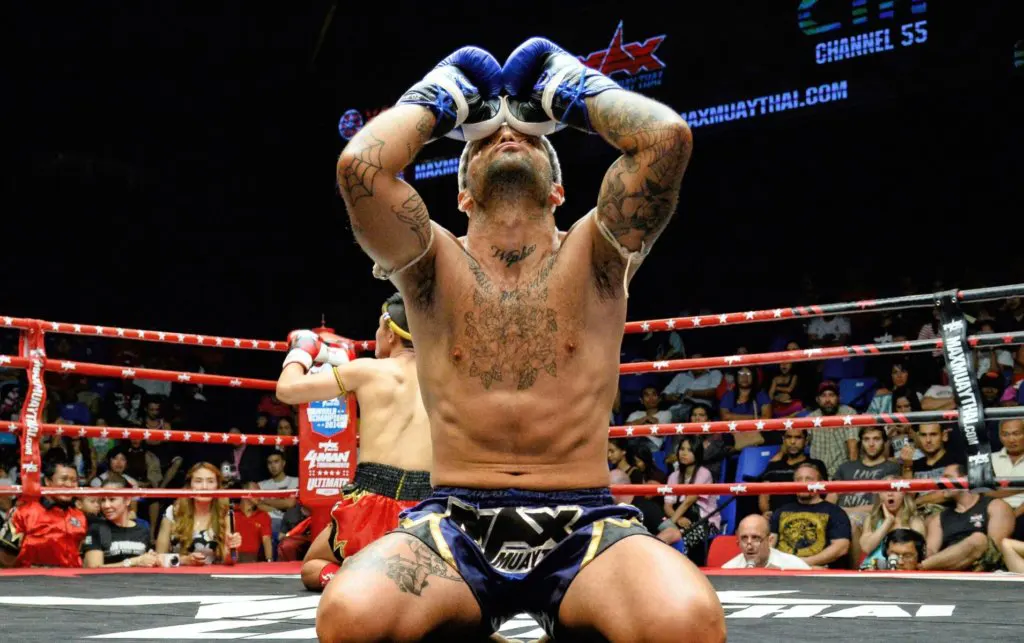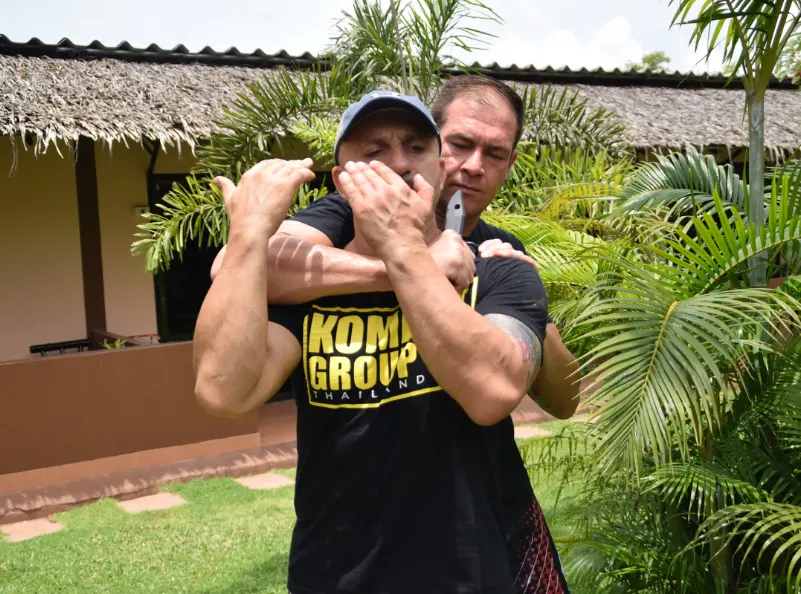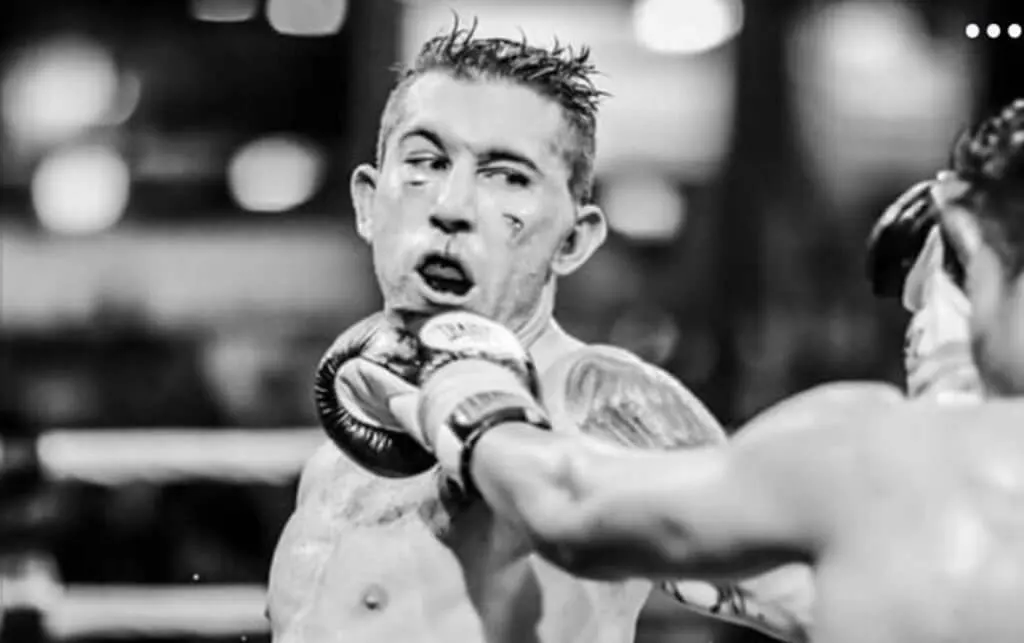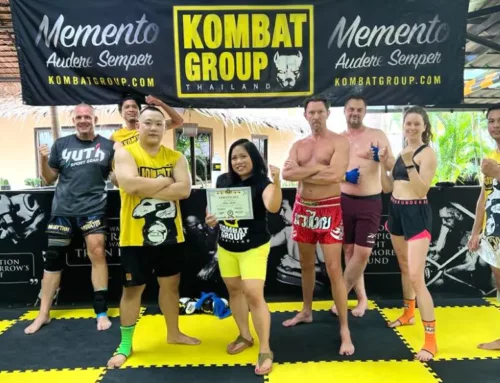The most effective discipline for street fighting “What’s the best martial art for self defense?” This is one of the most common questions asked when comparing different martial arts. This article will attempt to answer the more specific question: Which is the most effective martial art to learn for self-defense? That is to say which discipline may be the best to practice with street fighting in mind. In the interest of practicality, we’ll just focus on the disciplines most often offered in local gyms: Muay Thai, Western Boxing, Brazilian-Jiu Jitsu, Wrestling and MMA.
Competition: Mental Conditioning
You’ll notice that all disciplines listed are ones that you can actually compete in. Krav Maga is arguably the most effective discipline for street fighting, but you can’t truly compete in the sport. It was developed specifically to neutralize i.e. kill or severely injure your attacker with efficiency. This includes targeting the most vulnerable body points, using knives or objects and continuing to strike opponent until he or she is completely incapacitated. For this reason, it’s obvious why there are no legal, sanctioned Krav Maga competitions.
The reason we’re only discussing sports you can actually compete in has to do with the mental conditioning one can develop through competition. This is an often over-looked component of martial arts training that may actually be your greatest ally in a street fight. The truth is most people simply are not conditioned to the stresses of physical violence or even the mere threat of physical violence. The brain immediately kicks into fight or flight mode. Even if they do choose to fight, their thinking is emotional, reactive, rushed and impulsive. The result is a panicked mess of limbs with zero guiding intelligence in the attack or defense.
This doesn’t mean that those who respond in a state of panic with zero strategy are less than or stupid or cowardly. Their brains simply aren’t conditioned to think logically under that kind of stress. This is why competition matters and more specifically, training in a martial art that allows for competition matters. You can drill techniques all day and learn the most effective combinations and moves, but without regularly experiencing the real life threat of another person trying to hurt you, it’s nearly impossible to condition the mind to maintain clarity and respond with intelligence.
An Overview of Common Disciplines
So let’s take a look at each discipline listed above and try to get a better idea of which may be the most effective to learn. It’s important to note here that this article is not attempting to prove any particular discipline is ineffective or less than the other. It’s just a brief overview of common disciplines and how they may translate into street fighting and self defense.

Brazilian Jiu-Jitsu: Chokes and Holds
We’ll start with Brazilian Jiu-Jitsu (BJJ). BJJ is a grappling-based sport. It doesn’t start on the ground, but that’s where most of the fight occurs. BJJ is great because it doesn’t rely on strength or size to submit your opponent. Along with its use of chokes and holds, this makes it very effective for street fighting.
The core problem with it, however, is that it focuses on ground fighting. In a street fight, you never want to go to the ground. Ever. For one, grappling on concrete isn’t the same as on wrestling mats, and that’s not even considering the broken glass and other things you could be rolling around on. More importantly, is in consideration of multiple attackers. As soon as you’re on the ground, it’s too easy for another attacker to blindside you. You always, always, always want to maintain situational awareness: sight of everything happening around you. And you always want to maintain the option to run.

Wrestling: Leverage, Takedowns and Defense
The next discipline to address is wrestling. You run into the same problems with wrestling that you do with BJJ: it’s ground-based. As discussed, you don’t want to go to the ground in a street fight. But this shouldn’t disqualify wrestling as an extremely effective, versatile skill-set to have in relation to street fighting. Most noteworthy is its use of leverage. Similar to BJJ in that it doesn’t always rely on strength and size, one can use leverage to throw and submit a bigger, stronger opponent.
The most noteworthy aspect of wrestling is its training in takedowns and takedown defenses. You never want to go the ground on the street, but that doesn’t mean your opponent understands that. Wrestling and throwing someone to the ground is more instinctual than striking which is to say it is a more common response to physical altercations. It’s safe to assume most aggressors in a street scenario are not trained and therefore more likely to rely on instincts than skills. We’ll discuss this more later in the article.

Western Boxing: Range, Angles, Timing
Moving on to striking, we’ll first discuss Western Boxing. Boxing is an incredible craft to learn for anyone interested in any martial art or combat sport. Boxing is very limited in its use of weapons: two hands…more specifically the knuckles of two hands. It’s the simplicity of the sport that paradoxically creates so much complexity in the sport. Any beginning boxer can tell you after their first time sparring how much harder it is to connect with their opponent than it looks! Landing punches in boxing relies heavily on range, angles and timing. No other discipline develops these better than boxing.
So boxing definitely has its place in the development of any trained fighter, but given its limitations, it’s not the most effective for street fighting. One issue is that the human hand isn’t equipped to handle a hard punch to another’s jaw or head and can easily break. Another is that boxing requires some space (or range as referred to before). You can’t always rely on having that in a street fight. An attacker may be on you, grabbing you by the shirt, pushing you against a wall. Boxing doesn’t really train stand up grappling i.e. the clinch. This brings us to the next discipline: Muay Thai.

Muay Thai: Elbows, Knees, Clinch
Muay Thai is often referred to as the art of eight limbs given its use of kicks, punches, knees and elbows. Kicking is a huge part of Muay Thai but is arguably its least effective component in relation to street fighting. Another general rule of thumb, like never wanting to go to the ground, is to never have one leg in the air. Knees are the exception to this, but even then you’re in a very vulnerable position. Regardless of your level of training, no one is very well balanced with only one foot on the ground. So we can ignore the kicking component, but what are very effective tools are the elbows, knees and Thai clinch.
Elbows are great. They can withstand serious impact without breaking while delivering serious force. They’re also perfect for close-range fighting which is common in street fights. The same applies to knees — especially if you’ve taken control of your opponent’s head which is done through the Thai clinch.
Likely the most effective part of Muay Thai training for street fights is the Clinch. Clinch fighting is too complex to fully explain in this article, but it is basically taking control of your opponent’s head. Once in control of their head, you have control of their entire body. From there, you can do so much: you can throw them, knee them, elbow them…all in a safe, standing position and from a very close range. This is the style most effective for an advancing, aggressive opponent.

Mixed Martial Arts (MMA): Every Scenario
The last discipline that we’ll discuss in this article is Mixed Martial Arts (MMA). MMA is exactly what it’s called: a mix of all styles: Western Boxing, Muay Thai, BJJ, Wrestling. It has a stand-up, striking component that includes the entire arsenal of Western Boxing and Muay Thai. It also has a ground-based, grappling component with the entire arsenal of BJJ and Wrestling. Because of this, it trains in take-down defense. As mentioned earlier, you always want to avoid going to the ground, but you should know how to defend against your opponent attempting to take you down.
Mixed Martial Arts trains for almost every fight scenario outside of the use of knives and lethal force. You train to fight at a distance, up close, in the clinch and on the ground employing all the skills of every discipline we have covered so far. For this reason, it is arguably the most effective discipline to learn for self defense that you can actually compete in.
Competition Matters: Train the Mind
And just to highlight that point again: competition matters. This is where you train the mind to respond intelligently to violence, develop the ability to maintain a level head and steady nerves and learn to fight with confidence.

Our answer to question: MMA and Krav Maga
So in short, the best martial art for self defense is MMA given its training in multiple disciplines and option to compete. It is worth noting, however, that Krav Maga would be an exceptional skill to learn in addition to MMA. If you spend some time training and competing in MMA, you likely will have conditioned the mind’s fear response and could intelligently employ Krav Maga skills. Kombat Group Thailand teaches every discipline covered in this article including Krav Maga.

Worth noting…
Now the truth is that the question this article has aimed to address, “What’s the best martial art to learn for self defense?” is a bit naive. The reality is that trained fighters are never in street fights unless working in a security, military or police capacity. There are multiple reasons for this. To begin with, it’s worth noting that any fight by definition requires the participation of two parties. Obviously an aggressor could attack randomly, but most of the time, a fight ensues after some form of confrontation and argument. Most people eager to actually engage in physical violence with another person on the street have an underlying motive: to prove themselves. This is rooted in insecurity and fear.
No trained, accomplished fighter has this insecurity nor this fear. They already know what they are capable of. There is no need to prove or demonstrate anything. With that knowing and conscious competence comes a quiet confidence. This confidence communicates a subtle, unspoken message to all potential aggressors: I am dangerous. Humans are very intuitive beings. We respond to energy and vibrations that require no overt communication. We know when we are in the presence of danger, when to stay away and who to stay away from. For this reason, people don’t often provoke trained fighters. They don’t even need to be told not to. They already know.







